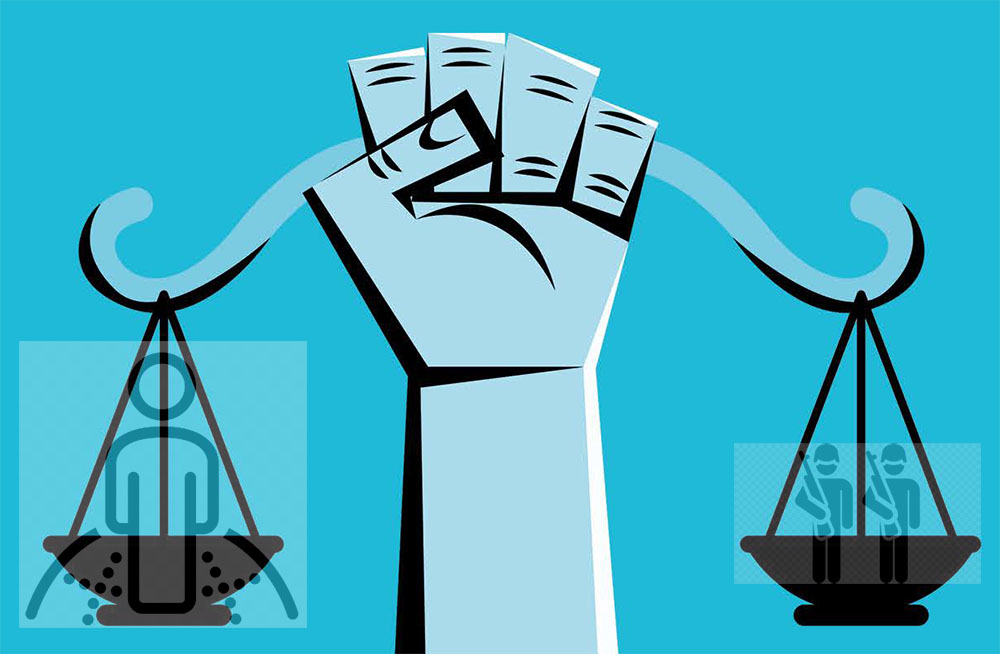
Transitional Justice Importance, Goals and Strategies
Victims have the right to see the punishment of perpetrators, to know the truth and to receive reparations, the impact of gross human rights violations. Because systematic human rights violations affect not only direct victims, but society as a whole, it is the duty of States, in addition to fulfilling these obligations, to ensure that such violations do not recur, and thus a special duty to reform institutions that have either had or are unable to avoid such violations.
A history of grave and unaddressed violations is likely to lead to social divisions and create a lack of trust between groups and State institutions, as well as to impede or slow down the achievement of security and development goals. It would also raise questions about adherence to the rule of law and could eventually be turned into a vicious cycle of violence in various forms.
Objectives
The constituent elements of the transitional justice policy relate to each other practically and theoretically, the most prominent of which are:
- Prosecutions, especially those involving perpetrators who are considered the most responsible.
- Reparation, through which Governments recognize and take steps to address the damage incurred. These initiatives often contain material elements (e.g. cash payments or health services) as well as symbolic aspects (e.g. public apologies or Memorial Day commemorations).
- Institutional reform, including repressive State institutions such as armed forces, police and courts, with a view to dismantling, by appropriate means, the mechanism of structural violations and avoiding the recurrence of serious violations of human rights and impunity.
- Truth commissions or other means to investigate and report patterns of systematic violations, to recommend adjustments and to help understand the underlying causes of serious human rights violations.
This is not a closed regulation. Various States have added other measures. Commemoration, for example, and numerous efforts to preserve the victims memory through the establishment of museums, monuments and other symbolic initiatives such as the renaming of public spaces, among others, have become an important part of transitional justice in most parts of the world.
Although transitional justice measures are based on strong legal and moral obligations, the margin of fulfilment of these obligations is considerable, and thus no equation fits all contexts.
Transitional justice strategies and forms
The actual application of the concept indicates that a transitional justice programme usually aims to achieve a range of objectives, including: stopping persistent human rights violations, investigating past crimes; Identification and punishment of those responsible for human rights violations, compensation for victims; Preventing future violations, maintaining lasting peace, promoting individual and national reconciliation.
In order to achieve these goals, many strategies are pursued, some with a judicial character and some that do not have such a character:
Criminal proceedings: these include judicial investigations into those responsible for human rights violations; Prosecutors often focus their investigations on those believed to bear the greatest responsibility for gross or systematic violations. Arguably, the first implementation of this mechanism was with the Nuremberg trials conducted for the Nazis in Germany after the Second World War. They may be conducted at the regional or international level or by certain special organs such as the Special Court for Sierra Leone.
Truth commissions: non-judicial bodies investigating violations in the recent past, issuing reports and recommendations on ways to address violations and promote reconciliation, compensating and remembering victims, and making proposals to prevent future repetitions.
Reparation or reparation programmes: these are State-supported initiatives that contribute to reparation for material and moral damages resulting from past violations; They usually distribute a mixture of material and symbolic compensation to victims, which may include financial compensation and official apologies.
Institutional reform: The reform of institutions that have played a role in these violations (often the security sector, military, police and judicial institutions. Others), besides purging these organs of incompetent and corrupt officials, these efforts often include legislative and sometimes constitutional amendments.
There are also other mechanisms, such as remembrance efforts, including museums and memorials that preserve victims public memorials, and raise ethical awareness about past crimes.
These mechanisms can be fully implemented at the national level special arrangements in Sierra Leone, East Timor and Kosova, The establishment of hybrid or hybrid transitional justice strategies is a logical response to problems facing international strategies such as geographical distance and value separation from the communities concerned and hence hybrid strategies are expected to be better able to achieve national reconciliation and social peace, Especially if it relies on a set of social and cultural values capable of accommodating differences in the different parties accounts of hostilities that these societies have witnessed.
On the other hand, transitional justice mechanisms and curricula do not operate separately from each other but are complementary and may be complementary; For example, speaking the truth without reparations might be considered by some to be a meaningless step, and granting material compensation without complementary truth-telling and disclosure processes would be an attempt to buy the victims silence. The complementarity of the compensation process with trials can also provide more comprehensive reparations than individual ones. On the other hand, reparations may need to be supported by institutional reforms to declare a solemn commitment to review structures that have supported or committed human rights violations. Bearing in mind that memorials often aim at symbolic compensation and moral reparation for damage.
* This article benefited from ICTJ publications

